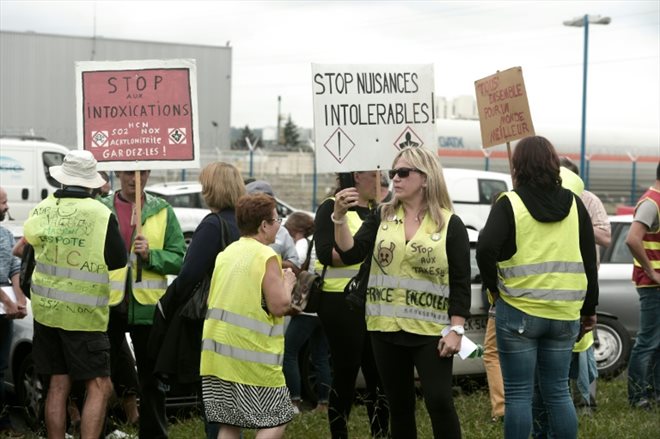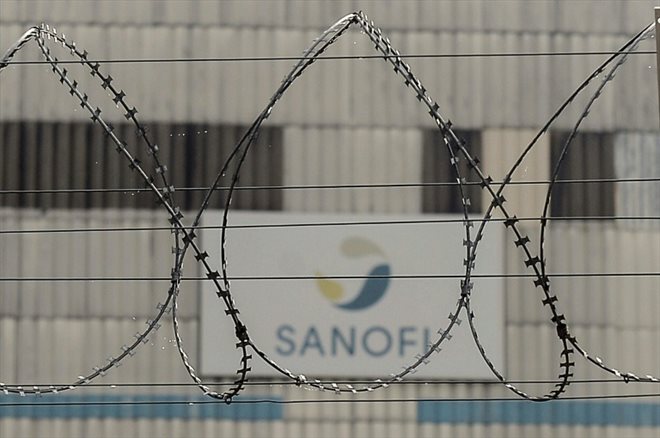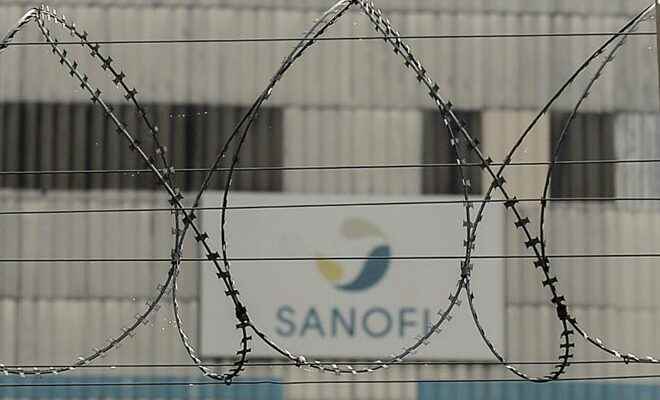The Sanofi factory in Mourenx, in the Pyrénées-Atlantiques, on July 1, 2019 (AFP/Archives/IROZ GAIZKA)
An investigating judge from the public health center of the Paris court has been tasked with investigating after revelations in 2018 about extraordinary toxic discharges from the Sanofi factory in Mourenx (Pyrénées-Atlantiques).
A judicial investigation was opened in August for endangering others and the offense of obstructing an authorized agent, AFP learned on Saturday from a source familiar with the matter.
“We are not aware of any open judicial information on this subject,” reacted Sanofi, contacted by AFP.
The Sanofi factory, which has around fifty employees in the Lacq basin, was shut down in early July 2018 after the revelation by the France Nature Environnement (FNE) association of toxic discharges outside the standards of sodium valproate.
This substance is the basis for Depakine, a drug accused of causing neurodevelopmental disorders in children.
The site had resumed production in stages, under environmental constraints and increased controls. He then had other days of stoppage in September 2018 after new “non-compliant” rejections of the same product.

Demonstrators protest against the discharges from the Sanofi factory in Mourenx, in the Pyrénées-Atlantiques, at the call of the CGT, on July 1, 2019 (AFP/Archives/IROZ GAIZKA)
After filing a first complaint in September 2019, the National Federation of Chemical Industries CGT, the CGT Union of Chemical Industries Sisteron and Mourenx and the Local Union CGT of Mourenx, Bassin de Lacq-Orthez and surroundings had filed a second, with constitution of civil party, to obtain the seizure of a judge of instruction of the pole public health of the court of Paris.
In September 2019, a union delegate pointed out to AFP that employees had “unwittingly inhaled these toxic emissions for months, even years”.
“We have to protect them. We are not immune to seeing some of them fall ill in a few years and if we were to win (in court) against Sanofi, that would help employee files all the more. who would then wish to turn against Sanofi”, declared Jean-Louis Peyren, the secretary of the CGT Sanofi.
The complaint with a civil action by the CGT had initially been declared inadmissible.
– “Questions” –
But, seized by the complainants, the investigating chamber of the Paris Court of Appeal reversed this decision in May and referred the case to the investigating judge. The prosecution then issued an introductory indictment in August, allowing the launch of the investigations.
“We are satisfied and hope that this instruction will allow employees and residents to obtain answers to their legitimate questions”, reacted to AFP Me François Lafforgue, the lawyer for the CGT.
“We ask that the investigations be carried out as soon as possible to make up for three years in the investigation of this file”, he added.
In a message to AFP, Sanofi pointed out that “the sodium valproate manufacturing process” generated “certain atmospheric emissions for which no threshold was set until 2018”.

The Sanofi logo on the facade of its factory in Mourenx, in the Pyrénées-Atlantiques, on October 16, 2018 (AFP/Archives/IROZ GAIZKA)
“It was only from 2018 that a prefectural decree established emission thresholds for sodium valproate,” added the group, indicating that it had “undertaken a large investment program on its Mourenx installation. , which meets all prefectural emission requirements”.
According to Sanofi, “a study was carried out in 2017 by an independent specialist company to assess the health and environmental impact related to sodium valproate emissions” and “established that the health risks associated with current and past releases of valproate of sodium at the site were below the toxic reference values”.
The group assured that the Mourenx site, which represents around 75% of the world’s production of sodium valproate, continued to operate “normally in compliance with regulations to produce an essential treatment for a very large number of patients”.
© 2022 AFP
Did you like this article ? Share it with your friends with the buttons below.




